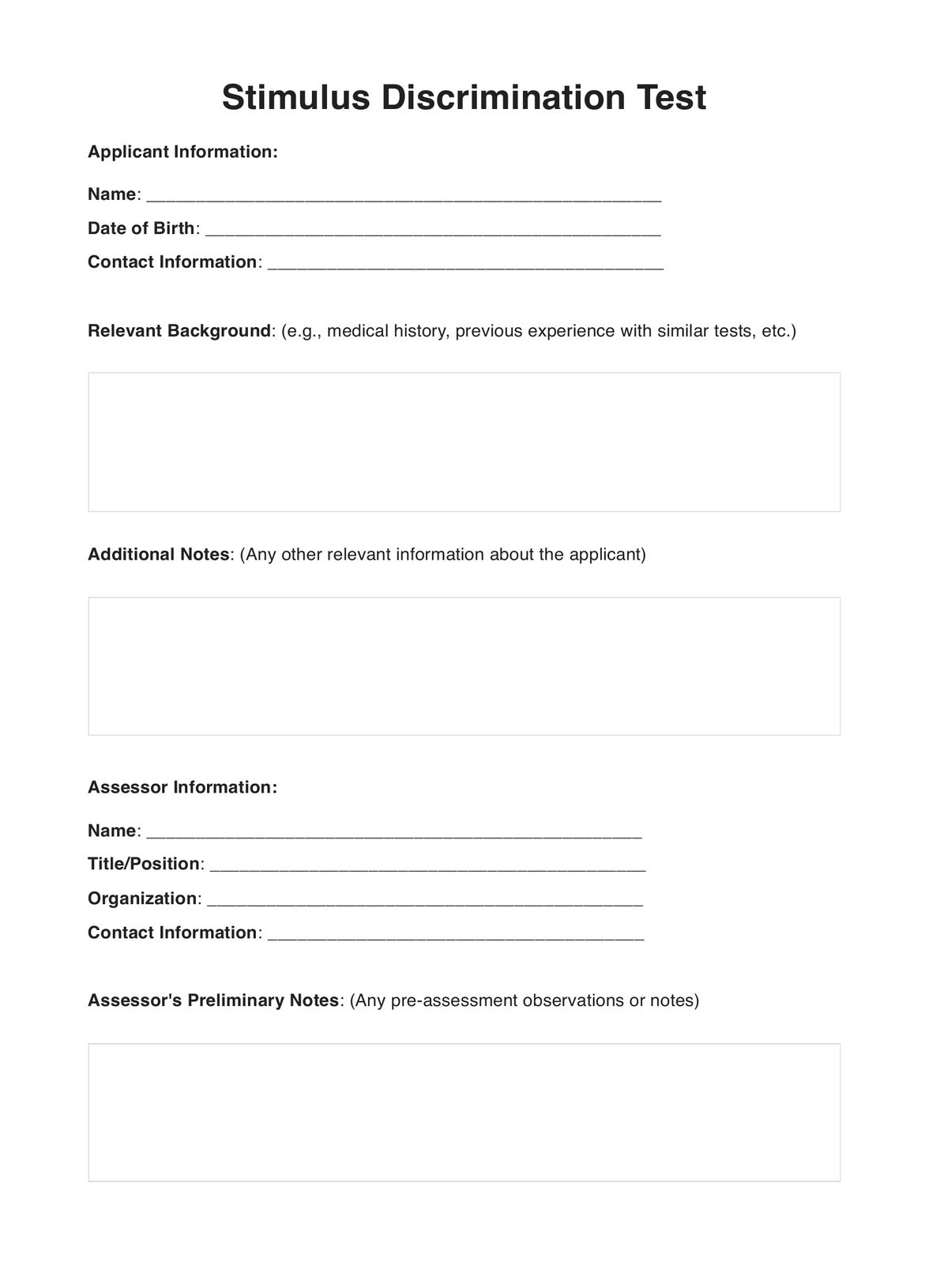Psychologists, therapists, educators and other mental health professionals use Stimulus Discrimination as part of their practice.

Stimulus Discriminations
Explore the concept of Stimulus Discrimination, a key principle in psychology, focusing on distinguishing between different stimuli. Learn more here.
Use Template
Stimulus Discriminations Template
Commonly asked questions
You can use this during behavioral therapy, skill training, or stress management.
Stimulis Dicrimination is used through association, reinforcement, discrimination training, and continuous monitoring.
EHR and practice management software
Get started for free
*No credit card required
Free
$0/usd
Unlimited clients
Telehealth
1GB of storage
Client portal text
Automated billing and online payments











